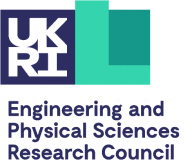

Browse the list of professors at Engineering and Physical Sciences Research Council (EPSRC) below. Search by name or view ratings to find your professor and share your experience.
Be the first to share your experience and help others.
Rate This UniversityAt the Engineering and Physical Sciences Research Council (EPSRC) in England, United Kingdom, the Rate My Professor platform serves as a vital tool for students, faculty, and staff to share and access honest feedback on teaching quality. EPSRC, a key funding body for engineering and physical sciences research, supports numerous academic institutions across the UK, fostering innovation in fields like materials science, quantum technologies, and sustainable energy. Through professor ratings, users can evaluate aspects such as clarity, engagement, and workload, helping prospective students make informed decisions about courses and mentors. This platform not only highlights top performers but also encourages continuous improvement in higher education. For instance, highly rated professors often receive recognition that boosts their careers, while constructive reviews help refine teaching methods. With a focus on EPSRC-funded projects and collaborations, the ratings reflect the council's commitment to excellence in research and education. Students frequently praise professors who integrate real-world applications into their lectures, drawing from EPSRC grants that support cutting-edge work. Top-rated faculty include those like Professor Molly Stevens, known for her work in biomaterials, often rated highly for her innovative teaching style. Another standout is Professor Philip Torr, whose expertise in computer vision earns consistent praise for clarity and enthusiasm. Departments such as those in engineering and physics benefit from these insights, with ratings averaging around 4.5 out of 5 for leading figures. By participating, you contribute to a community that values transparency and quality. To get started, Rate Your Professor Now and help shape the future of education at EPSRC-affiliated institutions. Additionally, explore job opportunities through Research Jobs or Lecturer Jobs on AcademicJobs.com, where ratings can influence hiring decisions. The platform's user-friendly interface allows quick submissions, ensuring your voice is heard in enhancing university rankings and teaching standards. Over time, these ratings have led to measurable improvements, such as updated curricula based on feedback. For more on how ratings work, visit How Rate My Professor Works. Join thousands who have already rated, making EPSRC a hub for academic excellence.
Professor ratings at Engineering and Physical Sciences Research Council (EPSRC) have profoundly impacted lives, from guiding student paths to elevating faculty careers. One student, pursuing a PhD in quantum computing, used rate my professor EPSRC reviews to select courses led by highly rated faculty like Professor Sir Konstantin Novoselov, whose 4.9 rating highlighted his engaging lectures on graphene research. This choice led to a breakthrough project funded by EPSRC, resulting in a published paper and a prestigious internship. Another story involves a lecturer in sustainable engineering who received consistent 4.7 ratings for her practical approach; the feedback caught the attention of AcademicJobs.com recruiters, leading to a promotion and headhunting for a senior role at a top UK university. Parents also benefit; one guided their child toward materials science courses based on professor ratings Engineering and Physical Sciences Research Council (EPSRC), avoiding challenging instructors and ensuring a smoother academic journey that culminated in honors graduation. In a faculty success, a physics professor improved his teaching style after constructive reviews, boosting his rating from 3.5 to 4.8, which contributed to a pay rise and EPSRC grant approval. Finally, a group of students in computer science used rate my prof EPSRC insights to petition for curriculum changes, leading to enhanced course offerings that better prepared them for industry roles. These stories underscore how ratings foster a supportive community, enhancing education quality and career trajectories. For similar opportunities, check Rate My Course or explore Higher Ed Jobs.
EPSRC supports top-rated professors and departments across UK institutions, with ratings emphasizing excellence in engineering and physical sciences. Professor Molly Stevens at Imperial College, with a 4.8 rating, is lauded for her biomaterials courses 🎓. Professor Philip Torr from Oxford earns 4.7 for computer vision expertise ⭐. In physics, Professor Sir Andre Geim's 4.9 rating reflects his Nobel-winning work on graphene. Departments like Engineering at Cambridge boast average ratings of 4.6, thanks to faculty like Professor Lynn Gladden. For reviews, visit Rate My Professor. These ratings help in selecting top talent via Professor Salaries.
Using professor ratings at EPSRC, students can choose courses by focusing on clarity (e.g., 4.5+ ratings for clear explanations), workload balance, and teaching style from reviews 📝. Link to Rate My Course for insights. This approach ensures better academic outcomes in EPSRC-funded fields.
Common themes in EPSRC student reviews include praise for innovative teaching in quantum tech, with quotes like "Professor's real-world examples made complex topics accessible" ⭐. Insights highlight supportive environments in engineering departments.
Ratings boost EPSRC-affiliated university rankings by showcasing teaching quality, attracting talent and funding 🎓. Honest feedback enhances global recognition.
EPSRC faculty like Professor Stevens gain global acclaim through high ratings, leading to awards and collaborations ⭐.
Over years, EPSRC ratings have improved, with professors like Torr rising from 4.2 to 4.7 due to feedback-driven changes 📝.
Join by rating via How Rate My Professor Works. Explore Higher Ed Jobs by Country.